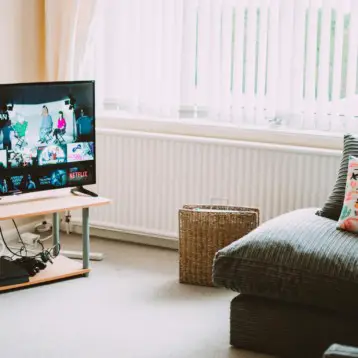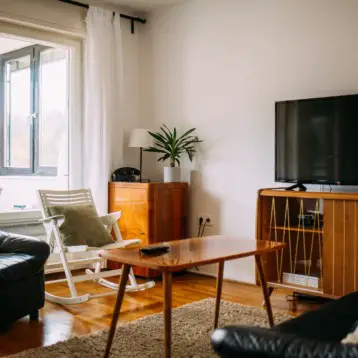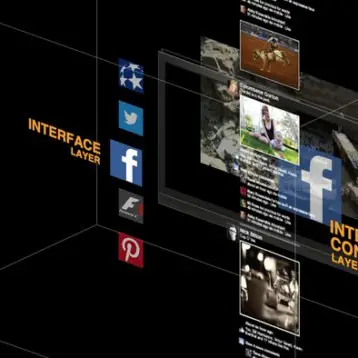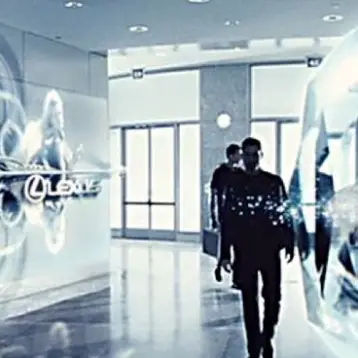NextWindow
|
The New-Zealand-based company “NextWindow” demonstrated its line of optical touchscreens, the largest of which is 120 inches wide. Their technology is based on two optical sensors located at the top corners of the screen. The sensors track the movement of objects close to the screen’s surface by detecting the interruption of an infra-red light source. The showcased display was “multi-touchable”, allowing users to manipulate on-screen objects using more than one finger at a time in order to resize or rotate items, such as pictures and windows. The display requires no special surface coatings, making do with a clear glass touch surface. According to the company, the clear glass surface provides maximum clarity of image and prevents scratches and marks from affecting the surface. Next Window also showcased an “interactive whiteboard”. Based on the same optical technology described above, this digital canvas can tolerate pretty much any stylus, including fingers, brushes, and any wooden or plastic objects.
T-Online
|
T-Mobile’s multi-touch screen was rightly nick-named “The Minority Report Screen”. It was one of the more impressive displays presented at this year’s CeBIT exhibition. This huge, transparent display attracted a large audience at the fair, as many people wanted to have a hands-on experience with the “just out of Hollywood” interface. The T-Online screen allowed them to manipulate large on-screen items using their fingers. The showcased application supported resizing, moving, and flipping any of the displayed objects. The company has yet to disclose any details regarding the release date of the screens, but we are ready to bet you will be seeing more and more of these futuristic interfaces hitting the market soon enough.
Samsung
Samsung unveiled two models of the company’s new “SyncMaster T” series – the T260 and T240 LCD HD TVs. The T260 is a 26-inch model, which has a 1920×1200 resolution, 20,000:1 dynamic contrast ratio, 5ms response time, and an official standby power of 0.3 Watt. T240 model’s specifications are similar to those of the T260, but this model will be available in either a 24-inch or 19-inch version. Both the T260 and T240 sport HDMI, D-sub, and DVI. Samsung has stated that these products will shortly become available on the market, but has yet to release details regarding the expected price.
Asus
|
ASUS showcased the VW223B, its latest LCD. The VW223B is a 22-inch model with built-in “DisplayLink” technology, which enables connecting multiple displays to a single PC via USB and Wireless USB devices. This model has a resolution of 1680×1050, a 5ms response time, and a contrast ratio of 3,000:1. The company has not announced a release date or price estimate for the new model.
Two other LCD models showcased by ASUS at the fair this year were the MK241H and the VK191T. MK241H is the first 24’’ monitor to have a built-in 1.3 mega-pixel webcam and to support HDMI. The VK191T is a 19’’ widescreen display with a relatively high contrast ratio of 4,000:1.According to the company, this contrast ratio is highly suitable for gaming applications, as it enables dynamic adjustment of the black-white contrast, resulting in sharper and brighter images.
Fujitsu Siemens
|
The company showed off a “zero watt” display, which does not consume any power when in standby mode. This is achieved thanks to a special relay in the monitor’s power adapter, which is controlled by the PC itself. When the computer switches to “power save” mode, the monitor is automatically disconnected, reconnecting again only on receiving the PC’s “wake-up call” – when detecting a video signal. According to Fujitsu, we should be able to get our hands on these “green” monitors already in summer 2008.
Collevo
The Taipei-based company “Collevo” showcased a 65-inch LCD display, which is already being offered for sale. This touchscreen giant has a resolution of 1920×1080, a contrast ratio of 2,000:1, and a 6md response time. The company demonstrated the large display by showing a colorful Paint-like application, which certainly would have made any child ecstatic. The display is waterproof and can withstand dusty environments. The company says it was specifically designed for outdoor use, such as digital street billboards.
TFOT has previously covered several interesting display technologies. You can check out an article about Aquavision’s 57-inch waterproof LCD television, which was recently showcased at the ISE show in Amsterdam. You can also check out our coverage of Sony’s “XEL-1” – the first commercial OLED TV to go on sale. For more information on CeBIT 2008, read TFOT’s full coverage of this year’s Consumer Electronics Show in Las-Vegas, where many state-of-the-art display solutions were presented.













